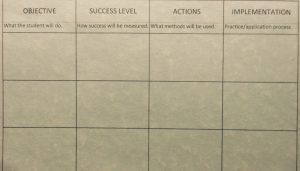How do programs for ‘at risk’ students help? Programs such as SIP (Student Intervention Program), SAP (Student Assistance Program), and PEP (Personal Education Plan) are designed to provide academic help for students who are considered at risk of failing a subject, in danger of not passing to the next grade or graduating from high school.
Some children can be helped through a 504 plan or an IEP. A 504 is different than an IEP because it is designed to help educators and parents create a customized learning plan that ensures the fair treatment of students in a regular classroom setting. The student with the IEP may receive different educational services in a special or regular classroom setting depending on the needs of the student. An at risk student’s plan for academic assistance will contain information such as:
• basic student information
• area of concern
• goals to be attained
• targeted skill(s)
• intended intervention
• parental supports
• a monitoring process
• staff members involved in the plan
A very basic form

Factors that create at risk students are poverty, race, ethnicity, language, lack of parent involvement, or chronic tardiness and absenteeism. In many school systems students are tracked in lower-ranking courses and programs that have low expectations.
The term ‘at risk’ is controversial and society disagrees about who or what is to blame. Practices in school for at risk students have varied from ability grouping, grade retention, special education, and pullout programs for remediation. Research has indicated that some of these approaches actually reduce student engagement while labeling the student for the rest of his/her school years.
School staff must have the belief that all students can succeed. This concept must be communicated throughout the school. Parents must also have and reflect this same belief. A school staff must have professional development on how to build a student’s strength and not focus on failures or weaknesses of students. Staff and parents must focus on problem solving skills and use a variety of instructional and assessment methods. Parents must be encouraged to participate. If parents are not able to come into the school, then the school must find a way to get into the community.
Are the programs that are designed to help students worth the work involved? Same states are saying ‘no’ and eliminating the programs because of the paperwork required. State lawmakers conclude that teachers are saddled with a lot of work. Isn’t student success the main focus of our school systems? Isn’t it about the learning? Let’s not lose focus of the focus – the students. It’s not good enough to say that the good teachers are already helping the students who need the help. All teachers help all students every day; they aren’t selective. Programs that provide students with academic or behavioral assistance are for students who may fall through the so-called cracks. Parents and educators cannot allow such programs to go by the way side. If the program becomes cumbersome, requires too much work, or is not meeting the desired success, then other means must be explored. Don’t throw the baby out with the bath water. All children need educated and all students can learn. We cannot do a disservice to students that are academically struggling.



